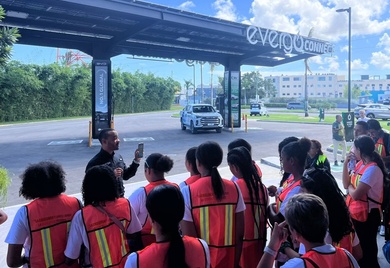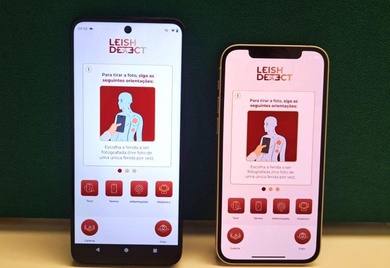Financial Inclusion, Key to Latin America & the Caribbean's Recovery

There is no possible choice between promoting financial inclusion and stimulating the economy. Inclusion is playing a fundamental role in Latin America and the Caribbean's (LAC) economic response to the crisis caused by COVID-19 and will be essential for its recovery.
This is one of the main conclusions of the 2020 Global Microscope presented in November by the IDB Group, which can be accessed for free at this link.
The Global Microscope 2020 is a report produced by The Economist Intelligence Unit with the support of IDB Invest, IDB Lab, the Center for Financial Inclusion (CFI), and the Bill and Melinda Gates Foundation, which annually assesses the environment for financial inclusion in 55 emerging countries through five categories, twenty indicators and 71 sub-indicators.
It is an international reference tool created in 2007 that was completely redesigned in 2018 to include changes in the field of financial inclusion after the emergence of digital financial services. However, this year many of the efforts made by regulators and managers to control the crisis caused by COVID-19 were not reflected in the laws and regulations adopted, so it was necessary to conduct additional interviews with experts and analyze secondary sources, to understand how financial institutions were responding to the crisis.
The main conclusion drawn from these efforts is that financial inclusion is and will be key to LAC's economic response and recovery. Of the 21 countries in this region included in the Microscope, 19 made emergency economic transfers to support vulnerable sectors of the population during closures and confinements. Of those, 11 countries distributed those funds mainly through financial accounts and digital wallets. Digital transfers made it possible to ensure that social assistance reached its recipients quickly and safely.
Digital infrastructures have enabled governments to identify, register and mobilize funds on an unprecedented scale and speed. The most prominent example can be found in Brazil, where since April 2020 government aid to independent workers, microentrepreneurs and the unemployed reached 67 million people, practically a third of the country's population.
For the distribution of such a huge amount of funds, a public bank opened digital savings accounts for those who were not banked so that they could access the benefits, creating 25 million new financial accounts in just two weeks. Other LAC countries also launched economic transfer programs for informal sector workers, reaching 75% of these workers in El Salvador, 38% in Chile, or 21% in Colombia.
These massive money transfers have been possible thanks to three fundamental aspects:
- Integrated identification systems: in Brazil, for example, the Cadastro Unico, an integrated data system for beneficiaries of the Bolsa de Familia economic transfer program, allowed the government to quickly identify the most vulnerable. In Guatemala and El Salvador, for their part, authorities identified potential aid recipients using utility bills that showed the lowest levels of consumption. Colombia, meanwhile, used the tax database to identify vulnerable workers.
- Financial accounts: identification systems that are linked to financial accounts can facilitate the verification of data as well as the delivery of funds to their recipients. In Chile, for example, aid from the COVID Bonus program was automatically deposited into the accounts of the beneficiaries linked to their national identification number.
- Mobile phones, which have been crucial in facilitating registration processes and the transfer of financial aid during the pandemic. In Colombia, the Ingreso Solidario program for families that were not previously beneficiaries of social protection economic transfer programs reached 2.6 million households, and managed to open a million new digital wallets and accounts for payment of services by telephone mobile to distribute funds. The recipients received an SMS notifying the receipt of the funds.
These three digital resources can go beyond the simple transfer of financial aid and pave the way for access to the digital economy, which can be crucial for economic recovery. In Brazil, just to cite one example, the Central Bank found that aid recipients have used an average of 40% of the funds to make digital payments for services, to businesses or for online purchases, which shows a notable increase in digital finance among a previously unbanked population.
This year's edition of the Global Microscope allows a clear conclusion to be drawn: investments in digital infrastructure pay off. The countries of Latin America and the Caribbean must continue providing their citizens with the necessary instruments to be part of the digital economy and must build channels that guarantee that emergency funds reach those who need them most, when the occasion calls for it.
LIKE WHAT YOU JUST READ?
Subscribe to our mailing list to stay informed on the latest IDB Invest news, blog posts, upcoming events, and to learn more about specific areas of interest.
Subscribe



